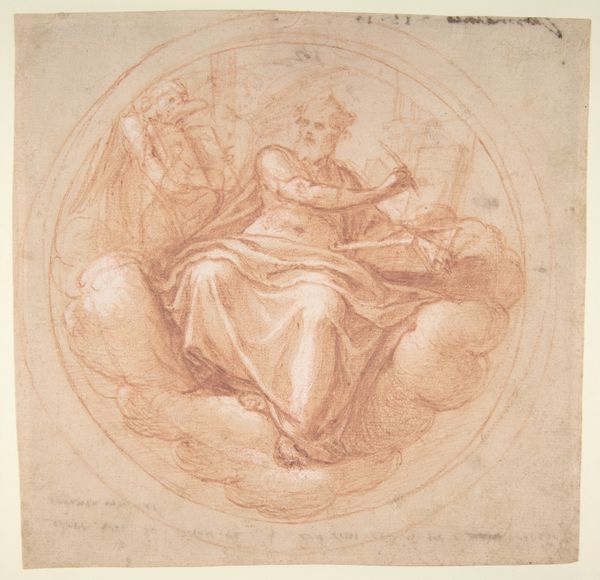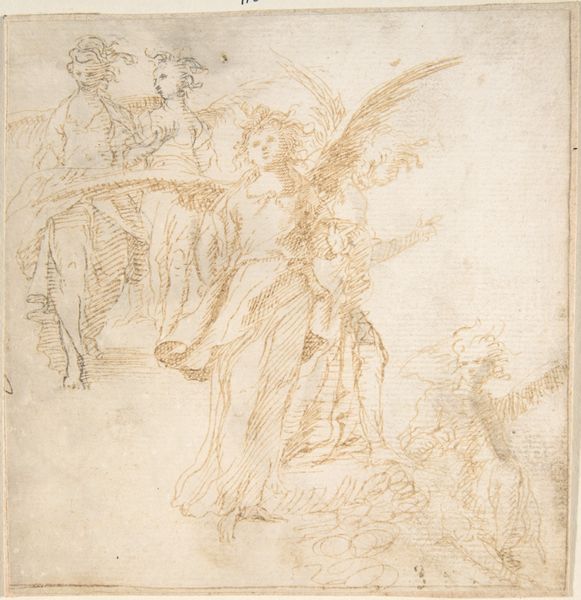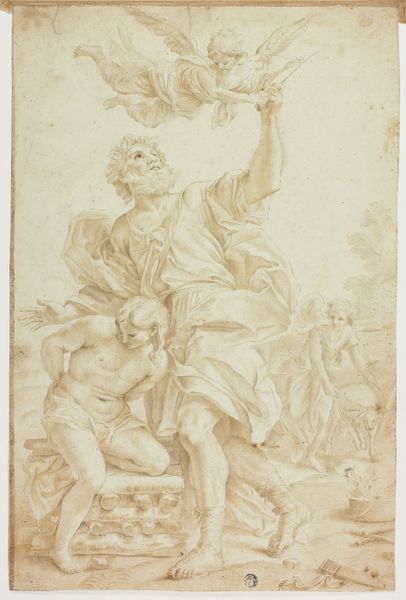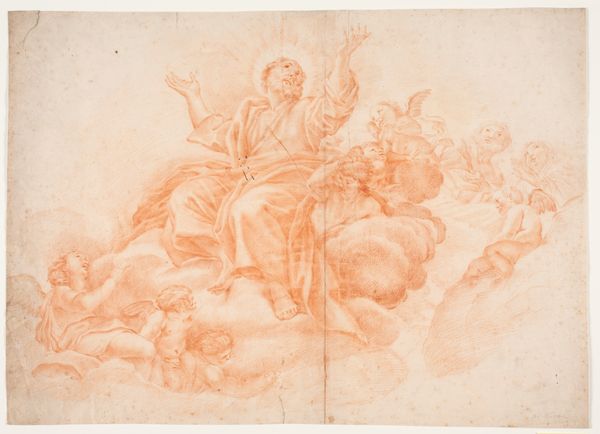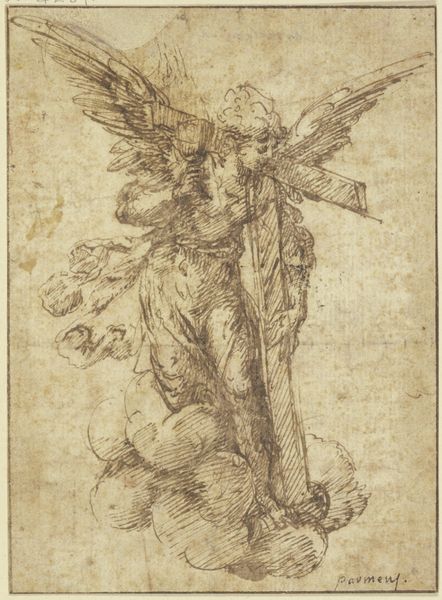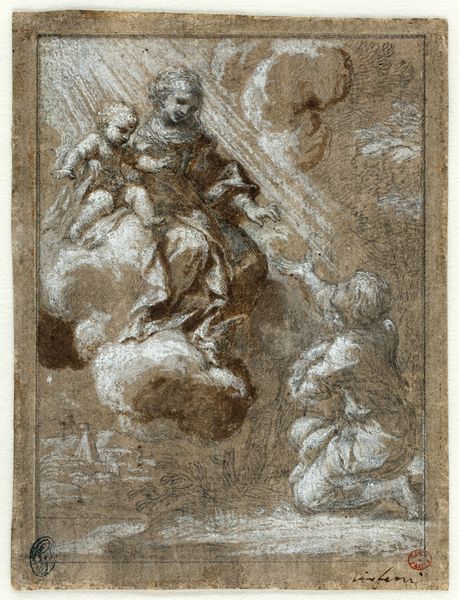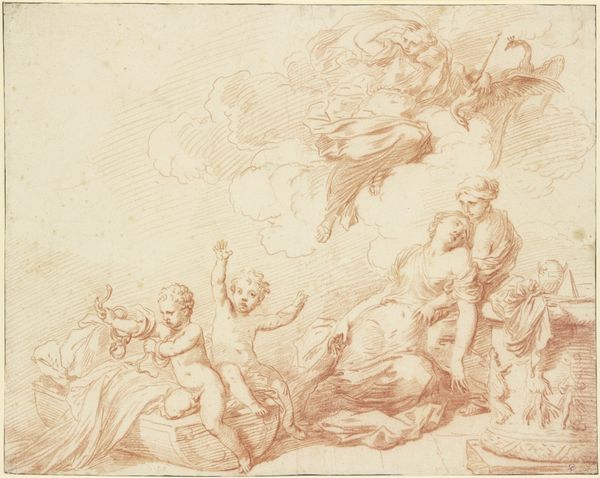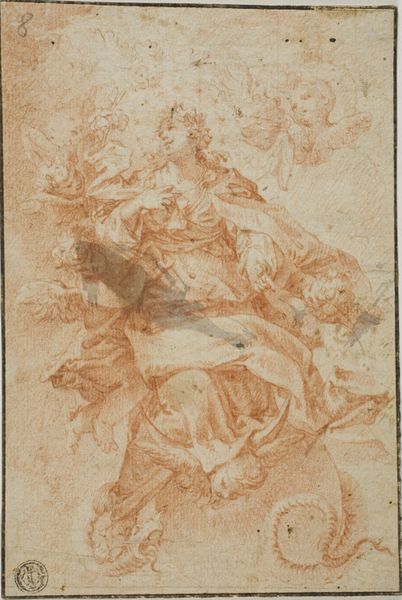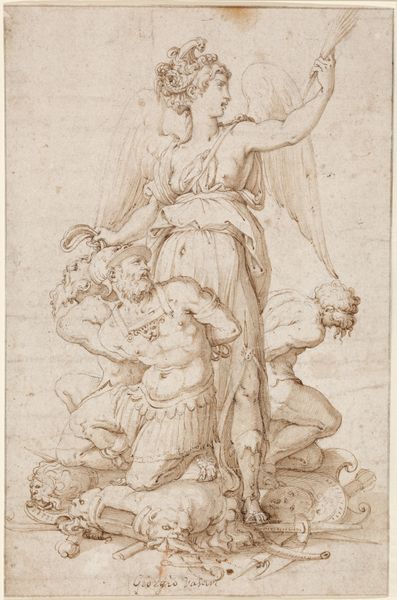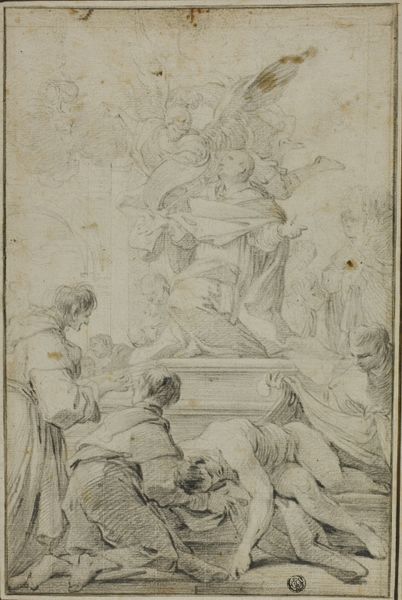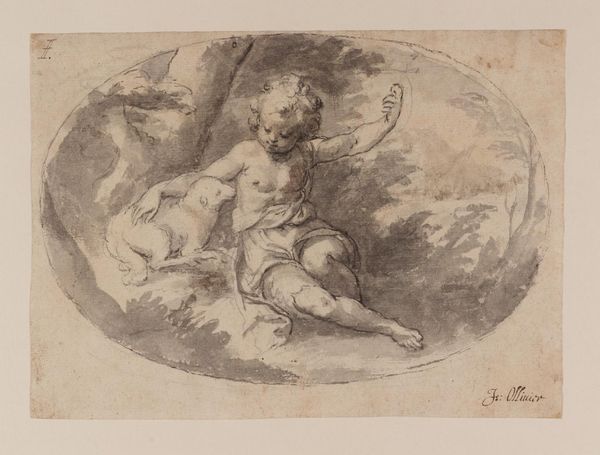
drawing, print, paper, pencil, chalk, graphite
#
portrait
#
drawing
# print
#
pencil sketch
#
charcoal drawing
#
figuration
#
paper
#
pencil
#
chalk
#
graphite
#
academic-art
#
watercolor
Dimensions: 259 × 295 mm
Copyright: Public Domain
Curator: Here we have "Angel with Lyre," an undated work currently residing here at The Art Institute of Chicago. It's executed with graphite, chalk, and pencil on paper. Editor: It's quite ethereal, a study in grey. The softness of the materials lends it a dreamlike quality, wouldn't you say? Almost as if the angel might simply float off the page. Curator: Absolutely. The subject matter and materials employed very much place this work within the academic traditions, particularly figure drawing as foundational for history paintings which were, during certain periods, perceived to hold the highest rank among art genres. We see the angel posed elegantly, a timeless ideal. Editor: I'm drawn to the texture created by the blending of chalk and graphite. Notice the contrast between the more defined lines outlining the lyre and the diffused shading that models the drapery. It's a fascinating interplay of precision and ambiguity. Curator: One could certainly explore the symbolism. Angels are messengers, often tied to moments of divine intervention. The lyre, of course, adds to this, referencing music as a tool for celestial communication. These features resonated within its historical and cultural context, during a time when the role of art was heavily oriented towards storytelling and religious didacticism. Editor: Looking at the cherubs, they create a playful asymmetry in relation to the solemnity of the angel. The eye is led to dart and jump around the paper and really notice how some sections are clearly defined while others seem unresolved, existing merely as a gestural mark. Curator: From a public reception standpoint, the idealized forms and religious themes reinforced moral values during that period. Academic art affirmed cultural norms while encouraging community ideals. Editor: It's truly remarkable how even a simple sketch can carry so much significance and convey meaning on both formal and contextual levels. Curator: Indeed, and thinking about its placement in the Art Institute today, we see how these values evolve over time. The way we now understand it reflects changes in culture and reception that contribute to its enduring presence.
Comments
No comments
Be the first to comment and join the conversation on the ultimate creative platform.
